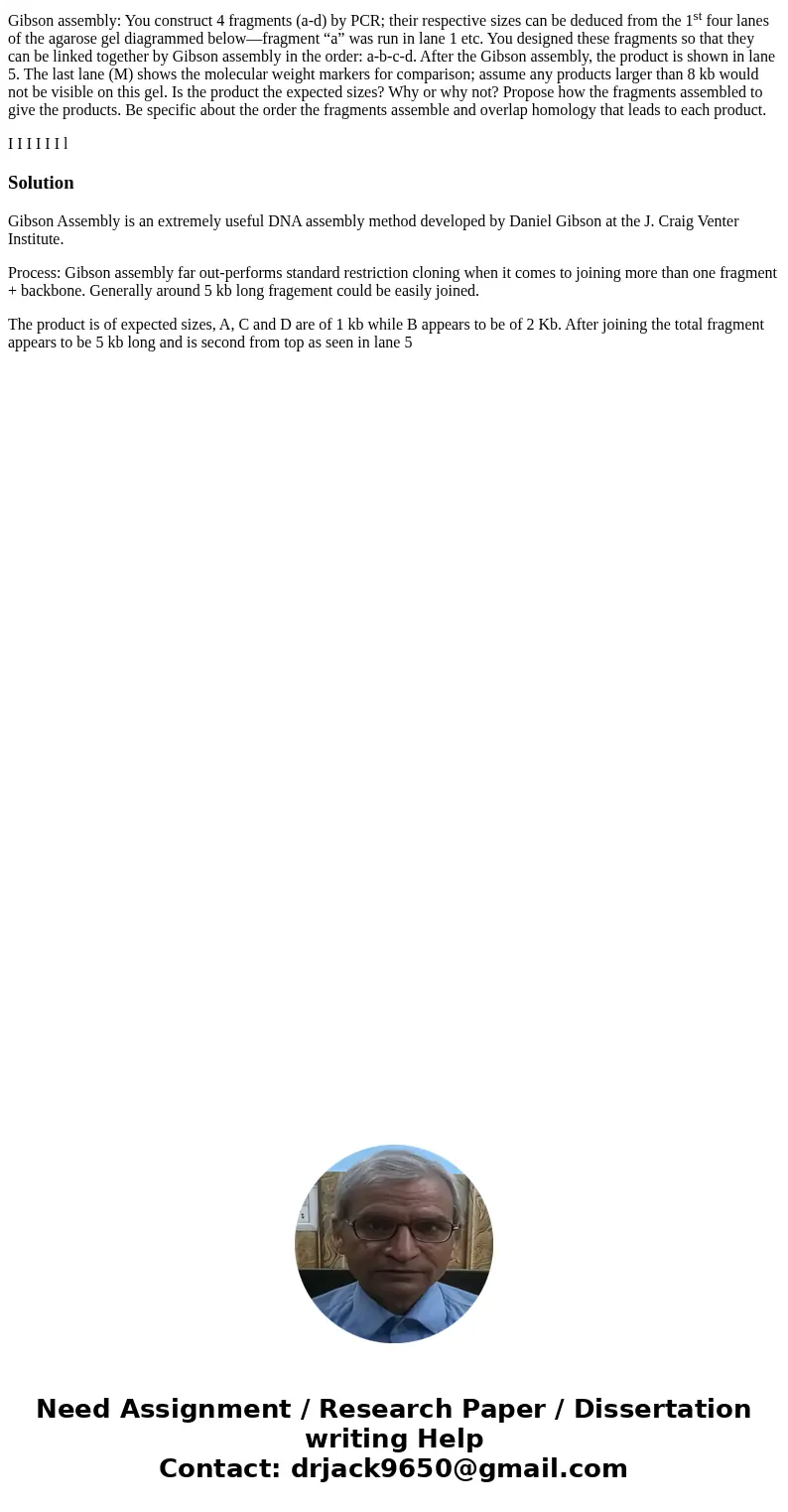Gibson assembly You construct 4 fragments ad by PCR their re
Gibson assembly: You construct 4 fragments (a-d) by PCR; their respective sizes can be deduced from the 1st four lanes of the agarose gel diagrammed below—fragment “a” was run in lane 1 etc. You designed these fragments so that they can be linked together by Gibson assembly in the order: a-b-c-d. After the Gibson assembly, the product is shown in lane 5. The last lane (M) shows the molecular weight markers for comparison; assume any products larger than 8 kb would not be visible on this gel. Is the product the expected sizes? Why or why not? Propose how the fragments assembled to give the products. Be specific about the order the fragments assemble and overlap homology that leads to each product.
I I I I I I lSolution
Gibson Assembly is an extremely useful DNA assembly method developed by Daniel Gibson at the J. Craig Venter Institute.
Process: Gibson assembly far out-performs standard restriction cloning when it comes to joining more than one fragment + backbone. Generally around 5 kb long fragement could be easily joined.
The product is of expected sizes, A, C and D are of 1 kb while B appears to be of 2 Kb. After joining the total fragment appears to be 5 kb long and is second from top as seen in lane 5

 Homework Sourse
Homework Sourse